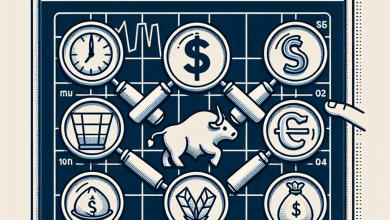
Dollar Stabilizes Ahead of Powell’s Speech and Payroll Data
The U.S. dollar held steady on Monday as traders anticipated a speech from Federal Reserve Chair Jerome Powell later in the day, just ahead of a crucial employment report due on Friday.
As of 04:25 ET, the Dollar Index, which measures the currency against a basket of six other major currencies, was slightly down at 100.035. This followed a challenging week where the dollar experienced its fourth consecutive weekly decline and its ninth drop in the last ten weeks.
### Dollar Looks Toward Payrolls
The decline in the U.S. dollar last week was attributed to the Federal Reserve’s preferred inflation measure indicating a decrease in price pressures, shortly after the central bank initiated its rate-cutting cycle.
During Monday’s speech at the National Association for Business Economics in Nashville, Powell is expected to discuss the Fed’s recent decision to lower its benchmark interest rate by half a percentage point.
A recent survey conducted by the group reported that a “monetary policy mistake” is viewed as the most significant downside threat to the U.S. economy over the next year.
The upcoming October nonfarm payroll report on Friday will be a key focus for investors, with economists predicting the U.S. economy added 144,000 jobs during the month. Analysts noted, “The Federal Reserve’s increased focus on employment means the market will be highly sensitive to the details of this release. If our predictions about a slight rise in unemployment hold true, we may see a softer dollar as market expectations align for a half-point Fed cut in either November or December.”
### Euro Prepares for Inflation Data
In Europe, the euro saw a slight increase of 0.1%, reaching 1.1172, as traders prepared for the release of preliminary inflation data for September on Tuesday. This data will be closely monitored as European Central Bank officials consider potential rate cuts in October.
German inflation figures will be released prior to the eurozone data, following last week’s results indicating that inflation in France and Spain was lower than expected, heightening the likelihood of a rate cut by the ECB this month.
Should the week conclude with weaker-than-anticipated eurozone inflation and softer U.S. payroll numbers supporting a 50 basis point Fed cut, analysts suggest the euro could underperform in a weak dollar environment. Although a short-term rise to 1.1200 in EUR/USD could be possible due to dollar weakness, a significant breakout will depend on unexpectedly strong eurozone inflation.
The British pound also traded up 0.2% at 1.3399 and remained close to last week’s peak of 1.3430, a level not seen since February 2022. Recent data revealed that the U.K. economy grew less than originally estimated in the second quarter, with GDP expanding by 0.5% from April to June, slightly below an initial estimate of 0.6%.
### Yen Backtracks from Gains
The USD/JPY pair climbed 0.2% to 142.44, as the Japanese yen surrendered some of last week’s gains following signals from the incoming prime minister indicating that monetary policy will stay accommodative. The yen had surged on Friday after Shigeru Ishiba, a former defense minister, won leadership of the ruling Liberal Democratic Party.
Additionally, Japan’s industrial production fell 3.3% month-over-month in August, while housing starts decreased by 5.1% year-over-year.
USD/CNY rose to 7.0120, stabilizing after a rally in the Chinese yuan prompted by stimulus measures announced by Beijing last week, which allowed the yuan to dip below the critical 7-per-dollar level on Friday.
 GOOGL
GOOGL  META
META 


